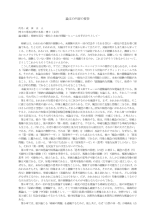1 0 0 0 IR 帰納を巡る一般化と未来の問題-ヒュームを手がかりとして-
1 0 0 0 OA ヒュームの「第一原理」と「青の欠けた色合い」
- 著者
- 成田 正人
- 出版者
- 日本イギリス哲学会
- 雑誌
- イギリス哲学研究 (ISSN:03877450)
- 巻号頁・発行日
- vol.38, pp.27-41, 2015-03-20 (Released:2018-03-30)
- 参考文献数
- 13
Hume establishes the first principle in his study of human nature: ʻall our simple ideas proceed ... from their correspondent impressionsʼ(T 1.1.1.11). It is so primary for his empiricism that based on it, he argues about space and time, a necessary connection between cause and effect, and even vice and virtue. But then why does he present the missing shade of blue as a contradictory example to it? In this paper, I will start by describing the resemblance thesis and the causal thesis involved in his first principle. I will then explain why the missing shade of blue is not a counterexample to the former thesis, but to the latter. Finally, I will argue why he does present the missing shade of blue though it does not affect his first principle.
